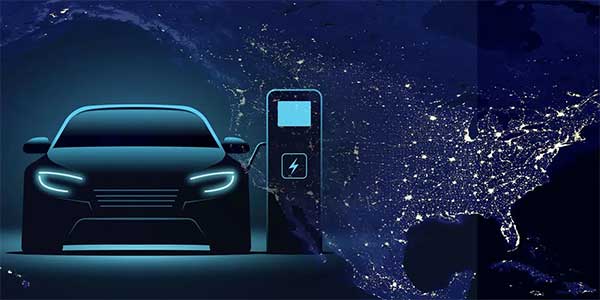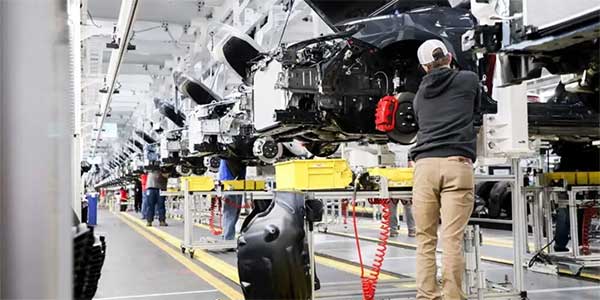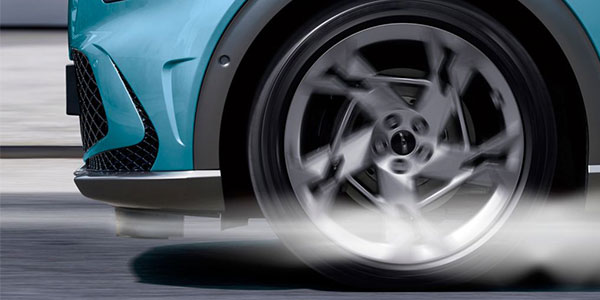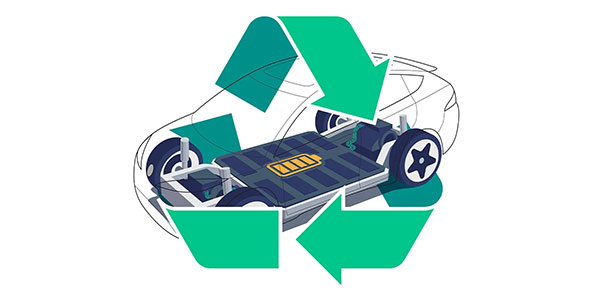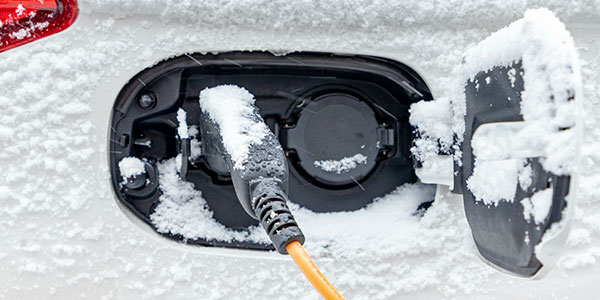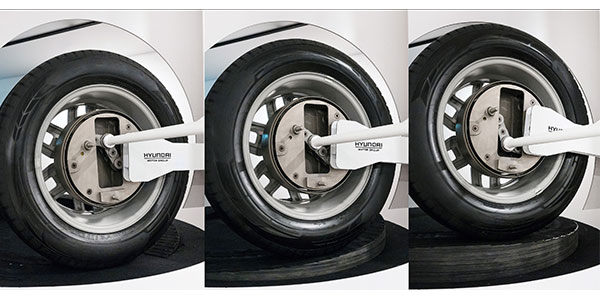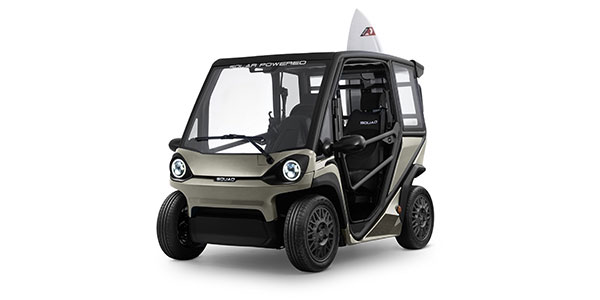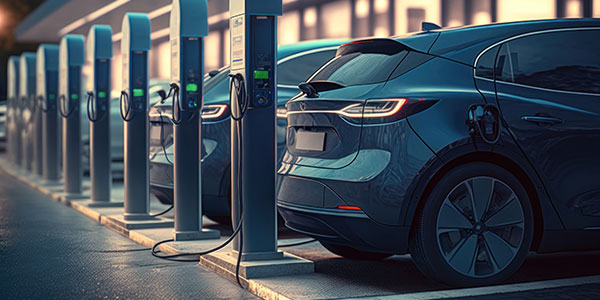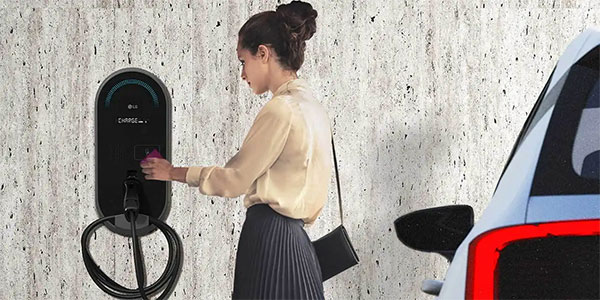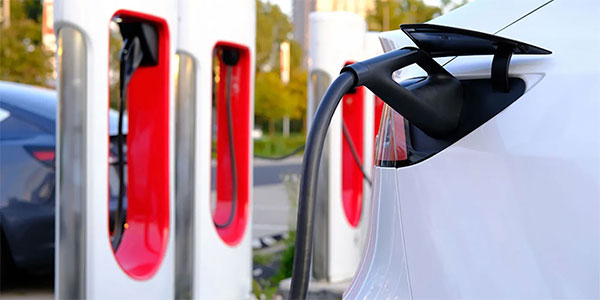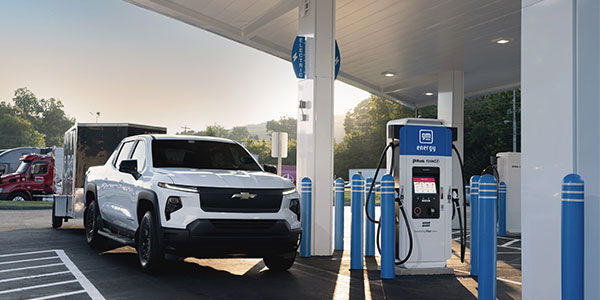Electrification is driving the greatest paradigm shift in the automotive industry in more than a century. Modern battery electric vehicle (BEV) powertrains are changing the way cars, trucks and SUVs are designed, engineered and manufactured. And one of the biggest changes will be noticed by consumers the moment they sit inside their new electric vehicle.
Most modern BEVs are built on what is described by automotive engineers as a “skateboard” platform — in which a large, flat battery pack fills the space between the front and rear axles and stretches almost the full width of the bodywork above it. The compact electric motors and related electronic hardware are mounted directly at the front or rear axles — or at both, in the case of all-wheel drive models.
Without the need to accommodate a bulky internal combustion engine and transmission, plus driveshafts, a gas tank and an exhaust system, this skateboard architecture allows for a larger interior and flat floor, without increasing the overall size of the vehicle’s exterior.
In simple terms, it gives automotive interior designers more room to experiment with forms and materials, and to create more sophisticated human-machine interface (HMI) systems. But this period of transformation could create headaches for suppliers.
“Electrification offers automakers the opportunity to transform the interior of a vehicle,” said Sascha Klapper, principal research analyst at S&P Global Mobility.
Although vehicle performance is still a key selling point, interior comfort and commodity are now designed to bring customers the best experience possible while making the driving experience easier, safer and more enjoyable.
Skateboards and hyperscreens
For example, the flat floor of skateboard-platform BEVs enables innovations such as the moveable floor consoles seen in Hyundai’s Ioniq 5 and the Genesis GV80. Mercedes-Benz is already offering “hyperscreens” that package three separate screens under a single glass panel that stretches across the entire dash in its electric-powered EQS and EQE models.
The latest generation of automotive touchscreens enable ultra-high-quality graphics and close to video-game levels of interactivity. More important for automakers, they also reduce the need for physical buttons, which are expensive to make and add weight and manufacturing complexity.
Some BEV automakers, notably Tesla, have already eliminated most physical buttons from their interiors. But there remains some evidence that consumers still prefer physical, redundant controls for frequently used functions, rather than navigating menus on a screen. Automakers believe voice activation and artificial intelligence will reduce the need for both touchscreens and physical buttons in the near future. Navigating this transition has massive upstream investment consequences for suppliers of both types of interfaces.
The simpler control systems of electric powertrains will accelerate the development of Level 4 and Level 5 autonomous vehicles.
This should also allow designers to dramatically reimagine the interiors in such vehicles, including:
- Changing seating arrangements that have remained the same for more than a century;
- Deploying more and/or larger screens for in-vehicle information and entertainment;
- Creating more elaborate ambient lighting displays; and
- Rethinking the steering wheel.
But until Level 4 or 5 vehicles arrive, the automobile’s interior layout must maintain a certain familiarity for crash-test and user-interface purposes.
For instance, Tesla’s steering yoke, which debuted in 2022 on the Model S, has drawn mixed reviews, particularly from expert drivers who note that it is more difficult to use than a conventional steering wheel. However, the yoke design makes it easier to retract into the dash when not needed in an autonomous vehicle; Audi, Honda, and Toyota, are experimenting with the concept.
Adding lightness
The flip side of powertrain packaging efficiency is that batteries are heavy, which means BEVs weigh significantly more than similarly sized internal combustion vehicles. And though electric motors are much more efficient than internal combustion engines, that extra mass has a direct impact on vehicle range. So, how to reduce weight elsewhere?
Seats, which are today among the heaviest non-mechanical components in an automobile, seem an obvious target for weight saving. But that may run counter to consumer preferences as well as overall vehicle efficiency. Consumers have expressed desire for many features now embedded in most luxury vehicle seats – such as motorized adjustment, massage, and climate control. But all those items add considerable weight.
However, seats with built-in heating and ventilation systems reduce the load on BEV climate control systems – heated seats use up to 12 times less energy than heating the entire cabin, for example. This is another area where suppliers will face challenges in creating lighter seats for BEVs when consumer desires may run counter to OEM engineering and design trends.
“S&P Global Mobility research shows consumer demand for seats with advanced comfort features such as powered lumbar and massage functions will grow. And that adds weight, and cost,” Klapper said. “Seats could be lightweighted by returning to the basic three latch-releases for fore/aft, rake, and seat height, while deleting heating and cooling elements. But that would not meet customer expectations, creating a Catch-22.”
Fixed glass panoramic roofs are another emerging trend that is likely to be accelerated by BEVs. Tesla offered a fixed panoramic glass roof as an option on its Model S in 2016 and now has fixed glass roof as standard on all its models. Ford’s Mustang Mach-E is another BEV with a fixed glass roof.
However, glass is heavier than steel – at least for now. In 2023 Tesla fitted a new glass roof that weighs less than the original, lets in five times the light, while offering the same level of ultraviolet protection. Consumers like the spacious feel fixed-glass roofs provide to vehicle interiors, and research shows demand for this feature is expected to almost double in the next five years. For automakers, fixed glass roofs reduce both complexity and cost compared with a regular movable sunroof.
Other interior components such as door panels will also become lighter. Fabrics and vegan leather will offer lightweight alternatives to animal-sourced leather and reinforce a growing consumer preference for eco-friendly and sustainable interior materials.
Then there is the sustainability equation. People who buy BEVs tend to care about the environment, and therefore may be fond of interiors from Volvo, Polestar, Hyundai, and Genesis BEVs that feature materials made from recycled PET plastic bottles. Recycled fishing nets are used to make floor carpets. The Ram 1500 BEV pickup truck features apple leather, a by-product from the apple industry, and floor mats made of recycled rubber and cork particles. And Mazda — which started its life as a cork manufacturer in 1920 — still uses cork, a naturally sustainable material obtained without killing the cork tree, as a trim material in its MX-30.
But vegan and recycled materials are still in the developmental phase, which means they need to undergo rigorous testing to ensure they can endure the life cycle of the vehicle. With the average age of light vehicles on U.S. roads at 12.5 years, vegan products must be able to withstand the harsh and lengthy use conditions to which they are submitted.
BEV powertrains will endow even mainstream electric vehicles with levels of performance and refinement that were once the preserve of luxury-badged models. In furthering that premium feel, innovative interior design and functionality will become a key differentiator in terms of a brand’s perceived value and prestige.




